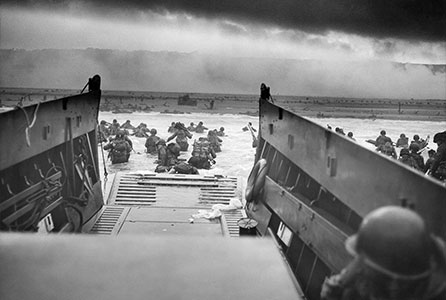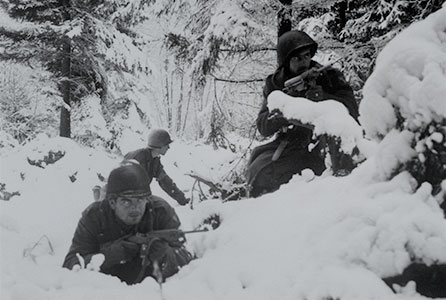Honoring the History of the 101st Airborne Division
The 2024 Army-Navy NCAA Football game will be played at Northwest Stadium in Landover, Maryland. Nike custom designed the 2024 Army West Point uniforms for the 125th Army-Navy Game. They tell the story of the Soldiers of the 101st Airborne Division during the Battle of the Bulge. Be sure to tune on Saturday, December 14, at 3:00 p.m. EST as the Army Black Knights take on the Navy Midshipmen in America's Game. For more information on how to watch, visit ArmyNavyGame.com.
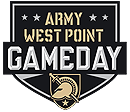
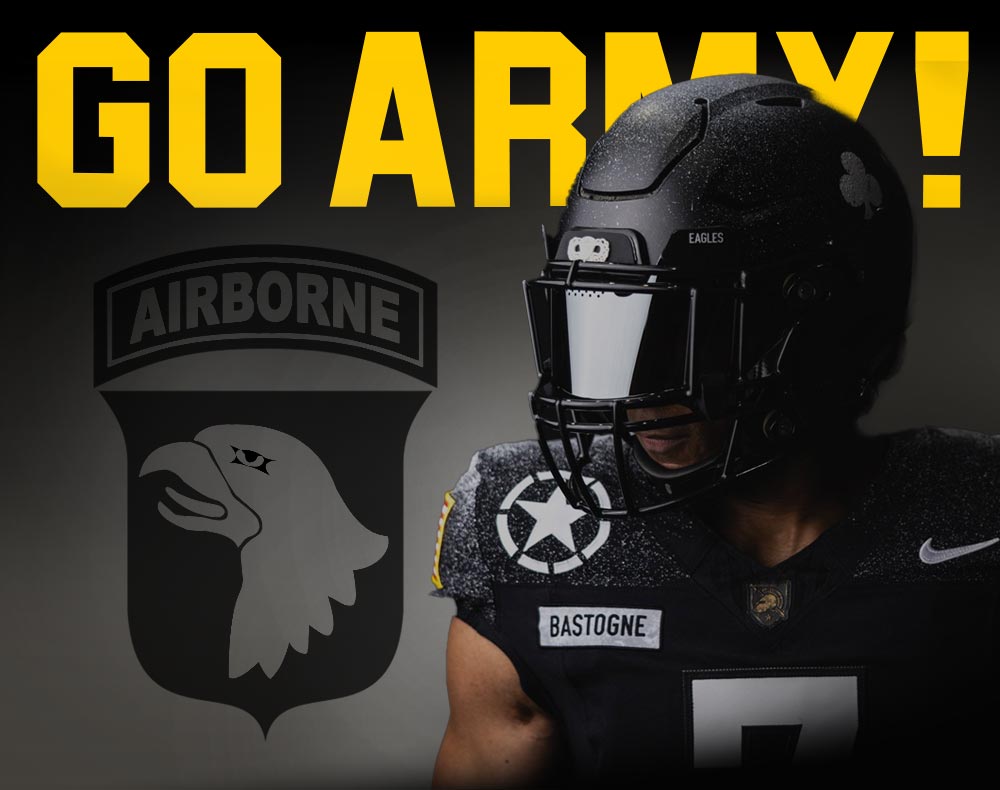

Card Suits
Helmets display the markings used by 101st paratroopers and glider troops to identify their unit affiliations. These were card suits: diamonds, clubs, spades and hearts.

Card Suits Assigned randomly across the Army Football Team, helmets display the markings used by 101st paratroopers and glider troops to identify their unit affiliations for the jump into Normandy and throughout the European Theater of Operations. The original purpose was that when a Soldier jumped or glided into Normandy and got separated from a larger portion of the unit, the easily identifiable symbol would clearly mark a Soldier as being part of a specific regiment and a small dash at the 12, 3, 6 or 9 o'clock position specified the battalion. Learn more about the Airborne Assault on D-Day
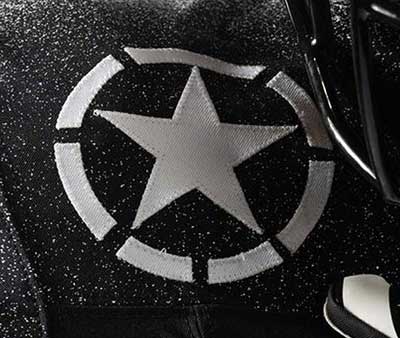
Invasion Star
The Invasion Star was used on American aircraft and vehicles to aid in battlefield identification. This version of the star has seven gaps in the outer ring to represent the junction of seven roads at Bastogne.

Invasion Star In August 1942, regulations were issued for all Allied forces that specified a white star as the national marking on vehicles. The Invasion Star was used on American aircraft and vehicles to aid in battlefield identification. This version of the star has seven gaps in the outer ring to represent the junction of seven roads at Bastogne. Learn more about star markings at the National WWII Museum
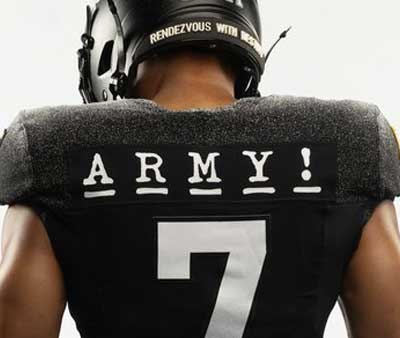
Typed "A R MY !"
Symbolizes Brig. Gen. Anthony McAuliffe's famous reply to demands for his surrender in Bastogne. When the Nazi commander demanded his surrender, McAuliffe replied only with the word “Nuts!”

Typed "A R MY !" On the back of the jersey, the underlined word ARMY! is capitalized. This typography evokes the typewritten version of Brig. Gen. Anthony McAuliffe's famous reply to demands for his surrender. When the Nazi commander demanded his surrender, McAuliffe replied only with the word “Nuts!” which Col. Joseph Harper, conveying his commander's response, informed his confused Nazi counterpart meant “Go to Hell!”
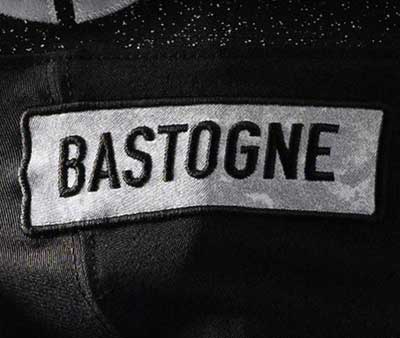
The Detailing
Patches on the uniform reflect the experience of the battle hardened 101st Airborne Division during World War II, from road signs to brass trinkets.

The Detailing "Bastogne Road Sign" on the top left of the torso has the style of the lettering the road sign held by Brig. Gen. McAuliffe in a famous photograph taken after the siege was broken. The coppered appearance of the Army West Point Athena Shield hearkens back to the weathered appearance, after half a year of combat from D-Day until the Ardennes Counter-Offensive, of a brass “cricket,” an inexpensive children's toy that paratroopers carried during the initial Normandy jump to use as a recognition signal in the dark.
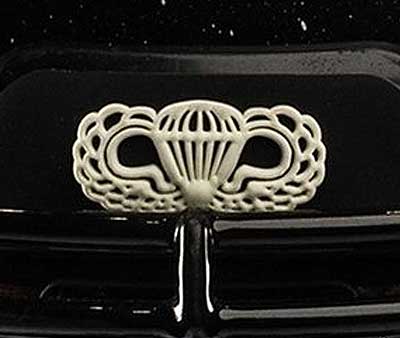
Paratrooper Wings
Above the front visor of the helmet is the "Paratrooper Wings" emblem. This badge is worn on Soldiers uniforms indicating they are a parachutist and grade of jump qualification.

Paratrooper Wings Paratrooper wings, also known as the Parachutist Badge or Jump Wings, are a military badge awarded to members of the U.S. Armed Forces. The badge is given in three grades: Basic, Senior and Master. On a uniform, the badge is an oxidized silver badge with a pair of stylized wings and an open parachute. The badge can also have indicators of the degree of qualification. A star above the canopy indicates a Senior Parachutist, and a star surrounded by a laurel wreath indicates a Master Parachutist.
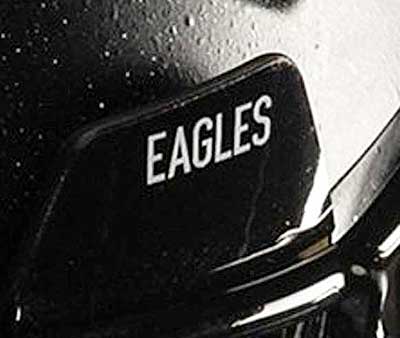
"Screaming Eagles"
The 101st Airborne Division's moniker is prominently on the sides of the helmet. The name comes from their patch, which depicts an eagle used as a mascot since the American Civil War.

"Screaming Eagles" These words are displayed prominently on the sides of the helmet. The 101st Airborne Division's moniker comes from their patch, which depicts “Old Abe,” a bald eagle first used as a mascot by the 8th Wisconsin Volunteer Infantry Regiment in the American Civil War.
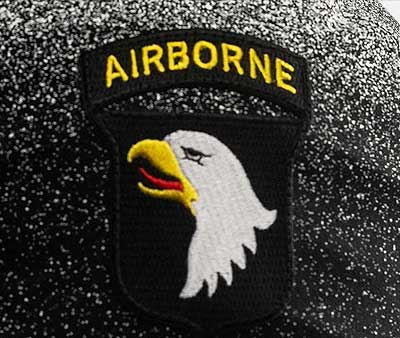
101st Airborne Patch
The patch highlights the unit's role as an airborne division and connected the division to an honored lineage: Wisconsin's 8th Volunteer Infantry Regiment. When the Army first activated the 101st in Milwaukee in 1921, “Old Abe” returned as a reference to Wisconsin's military history.<

101st Airborne Patch The 101st Airborne Division's moniker comes from their patch, which depicts “Old Abe,” a bald eagle first used as a mascot by the 8th Wisconsin Volunteer Infantry Regiment in the American Civil War.

Uniform Inspiration
The color of this year's uniform reflects the canopy of fog and snow giving way to the shadows beneath the snow-covered forests in the Ardennes. This was the environment for the 101st Airborne's stubborn defense of Bastogne.
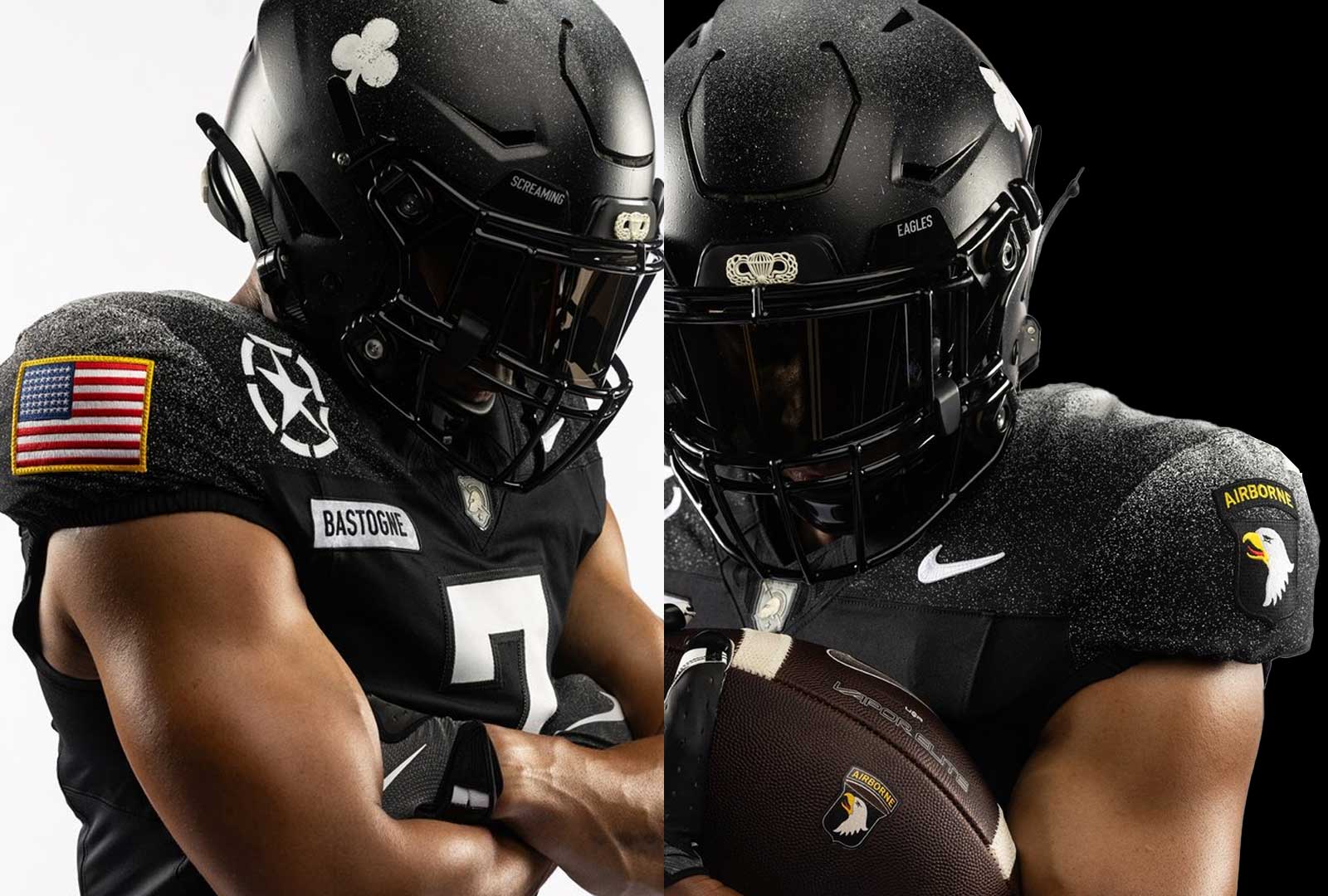
Uniform Inspiration The color of this year's uniform is black with grains of white sprinkled over the shoulders and torso. The color of this year's uniform reflects the canopy of fog and snow giving way to the shadows beneath the snow-covered pine forests in the Ardennes. This environment formed the backdrop for the 101st Airborne's stubborn defense, made more difficult by the lack of air support.
The siege of Bastogne
This year marks the 80th anniversary of the Battle of the Bulge and the 101st Airborne's Division's participation in the defense of the town of Bastogne. The Battle of the Bulge occurred in the winter of 1944 as elements of the 101st looked to secure and defend the city of Bastogne which was surrounded by the German Army who were attempting to make a winter offensive to break allied lines. The airborne Soldiers were able to repel the attacks of the Germans and outlast the barrage of German artillery until Lt. Gen. George S. Patton's Third Army was able to break through the German line to aid the 101st Soldiers. Both Lt. Gen. Patton and Brig. Gen. Anthony McAuliffe, commander of the 101st Airborne Division, are seen as heroes that saved the town of Bastogne from destruction. That legacy of service and sacrifice has not been forgotten by those serving in the 101st today.
Behind The Uniform
Collaboration between West Point Athletics and Nike yielded this year's uniform design which pays homage to the accomplishments of the 101st Airborne Division Watch the video for the full story. Explore the inspiration and history on the website.
The Screaming Eagles
The 101st Airborne Division (Air Assault) is the only air assault division of the United States Army. Nicknamed the “Screaming Eagles,” the 101st has consistently distinguished itself by demonstrating the highest standards of military professionalism since its activation at one minute after midnight, Aug. 16, 1942.
On Aug. 19 of that year, the first commander, Maj. Gen. William C. Lee, promised his new recruits that although the new division had no history, it would soon have a “rendezvous with destiny.” As a division, the 101st has never failed that prophecy.
The 101st is recognized for its unmatched Air Assault capability, its ability to execute any combat or contingency mission anywhere in the world, and is still proving its mettle as “tomorrow's division in today's Army.”
Voices of the 101st Today
The 101st Division became an airborne unit in 1942. During World War II, it played a critical role in the D-Day landings, Operation Market Garden, the liberation of the Netherlands, and its action during the Battle of the Bulge defending the city of Bastogne. During the Vietnam War, the 101st fought in several major campaigns and battles, including the Battle of Hamburger Hill in May 1969. It has a proud history of spearheading the U.S. Army's most perilous offensives. Hear from Soldiers in today's 101st Airborne Division on what the heroic efforts of Soldiers from WWII mean to them and how they honor their legacy.
RESOURCES
The Game & The Uniform
General
Historical Media & Books
Articles
- The Army-Navy game: 13 historical facts you probably don't know
- Veterans share Army-Navy game experiences
- 101st Soldiers commemorate 79th anniversary of the Battle of the Bulge
- Benelux Soldiers step back in time to Battle of the Bulge
- Welcome to the 101st Airborne Division (Air Assault)
- Bastogne commemorates Battle of the Bulge's 75th anniversary
- The Story of "Old Abe," famous Wisconsin War Eagle on 101st Airborne Division patch
- Forgotten Fights: The 101st Airborne at Carentan, June 1944 (External)
Uniform images courtesy of West Point Athletics
External Links Disclaimer: The appearance of hyperlinks to external sites does not constitute endorsement by the Department of the Army of the linked website or the information, products or services contained therein. For other than authorized activities such as military exchanges and Morale, Welfare and Recreation sites, the Department of the Army does not exercise any editorial control over the information you may find at these locations. Such links are provided consistent with the stated purpose of this DoD website.
